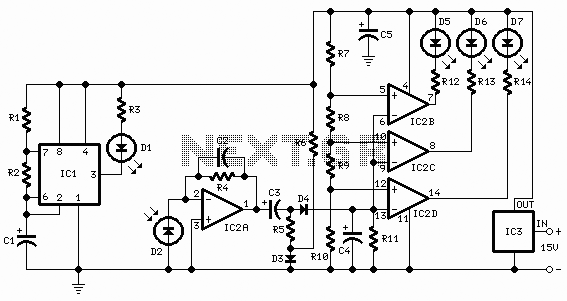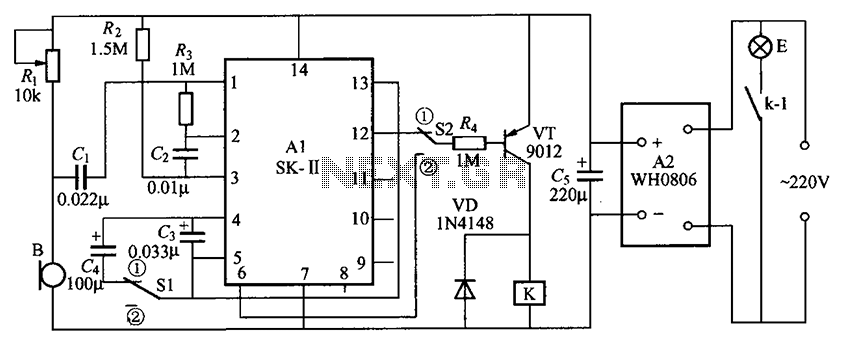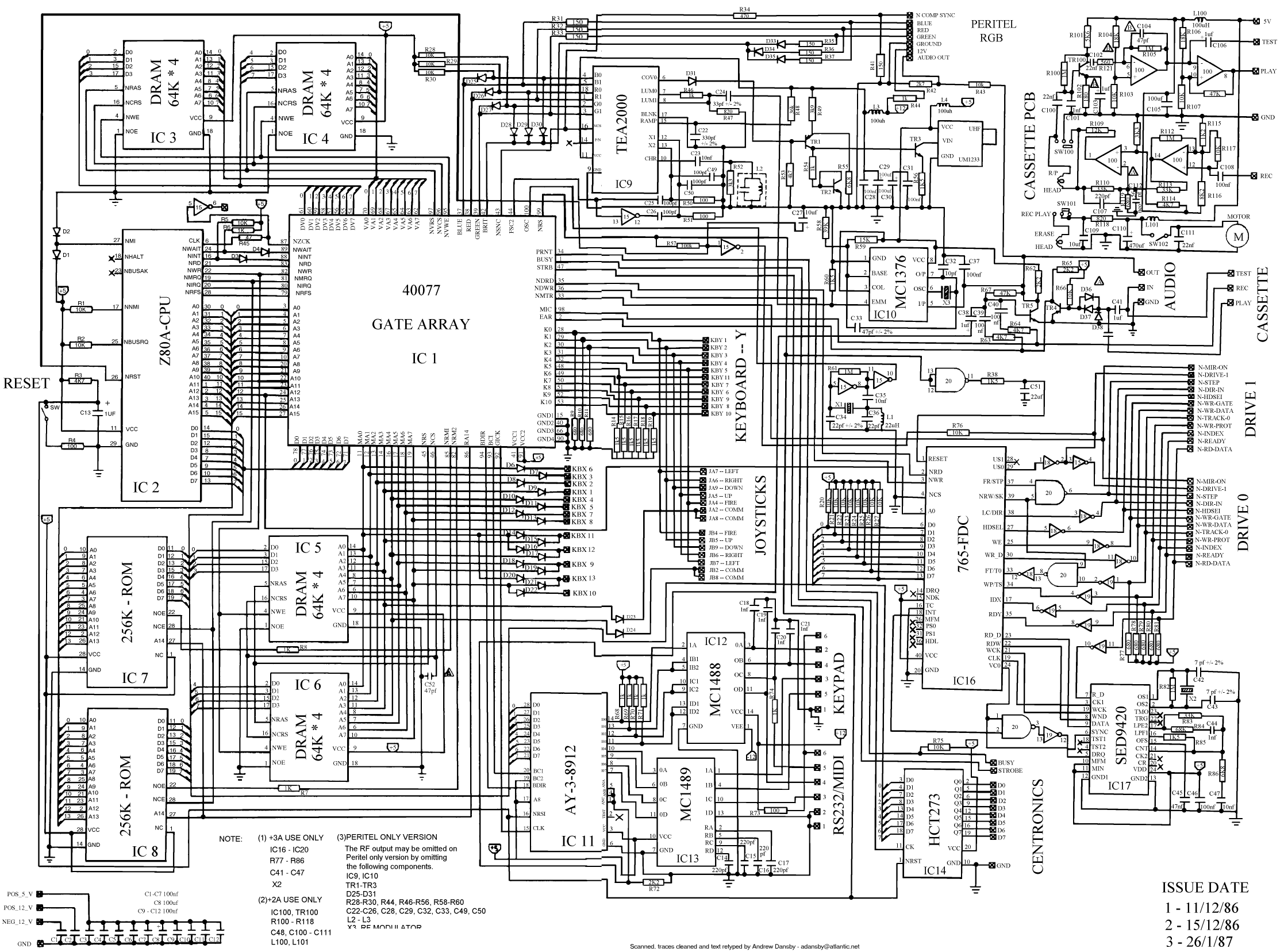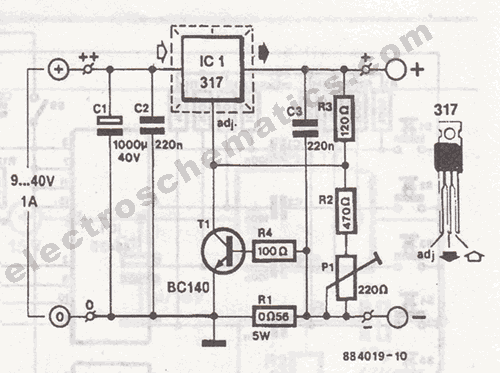
Audio-Operated Room Monitor Circuit

The circuit is designed to establish a monitoring and surveillance system for a remote location, functioning as a room monitor or baby alarm.
The proposed circuit for the monitoring and surveillance system incorporates various electronic components to ensure reliable operation in a remote setting. The main objective is to provide real-time monitoring capabilities, allowing users to keep track of activity in a designated area, such as a nursery or room.
The circuit typically includes a microcontroller, which acts as the central processing unit, responsible for receiving input signals from various sensors. Commonly used sensors may include motion detectors, sound sensors, or temperature sensors, each contributing to the overall functionality of the monitoring system. For instance, a sound sensor can detect noise levels, while a motion detector can identify movement within the monitored space.
Power management is crucial in remote applications, so the circuit may employ a battery management system to ensure efficient power usage and extend operational time. Additionally, wireless communication modules, such as Wi-Fi or Bluetooth, can be integrated to transmit data to a mobile device or a central monitoring station, enabling users to receive alerts and notifications in real time.
The circuit design should also incorporate safety features, such as over-voltage protection and current limiting, to safeguard against potential electrical faults. Furthermore, an intuitive user interface may be included, allowing users to easily configure settings and view monitoring data.
In summary, the circuit serves as a comprehensive solution for remote monitoring and surveillance, utilizing a combination of sensors, microcontroller processing, and communication technology to provide effective oversight in various environments.The circuit is aimed to create a monitoring and surveillance scheme for a remote location to function as a room monitor or baby alarm with the use of an a. 🔗 External reference
The proposed circuit for the monitoring and surveillance system incorporates various electronic components to ensure reliable operation in a remote setting. The main objective is to provide real-time monitoring capabilities, allowing users to keep track of activity in a designated area, such as a nursery or room.
The circuit typically includes a microcontroller, which acts as the central processing unit, responsible for receiving input signals from various sensors. Commonly used sensors may include motion detectors, sound sensors, or temperature sensors, each contributing to the overall functionality of the monitoring system. For instance, a sound sensor can detect noise levels, while a motion detector can identify movement within the monitored space.
Power management is crucial in remote applications, so the circuit may employ a battery management system to ensure efficient power usage and extend operational time. Additionally, wireless communication modules, such as Wi-Fi or Bluetooth, can be integrated to transmit data to a mobile device or a central monitoring station, enabling users to receive alerts and notifications in real time.
The circuit design should also incorporate safety features, such as over-voltage protection and current limiting, to safeguard against potential electrical faults. Furthermore, an intuitive user interface may be included, allowing users to easily configure settings and view monitoring data.
In summary, the circuit serves as a comprehensive solution for remote monitoring and surveillance, utilizing a combination of sensors, microcontroller processing, and communication technology to provide effective oversight in various environments.The circuit is aimed to create a monitoring and surveillance scheme for a remote location to function as a room monitor or baby alarm with the use of an a. 🔗 External reference





